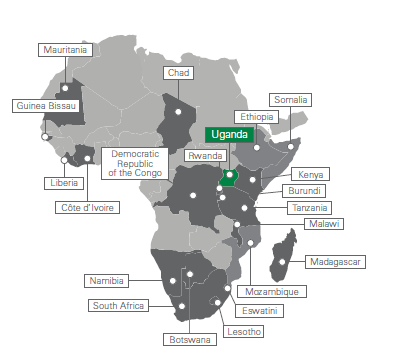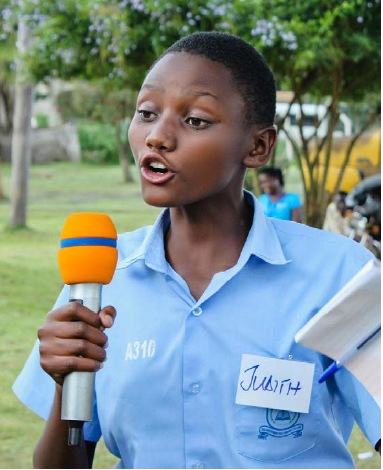Africa is on the move: the continent has some of the fastest-expanding economies in the world with a rapidly growing young population. Uganda is one of these examples, having emerged from decades of conflict to become a stable and vibrant centre in the East Africa region with a GDP that has consistently grown at around 4.5 per cent per year and is projected to grow further to around 6 per cent in 2019.1 Steady growth combined with a young population – over half of Uganda’s approximately 42 million people are under the age of 15 – presents a unique opportunity to leverage the skills, resources and capacities of millions of children and adolescents.
Fokus auf junge Frauen und Mädchen
In Uganda, 25 per cent of girls under 19 years are mothers. The proportion of adolescents who have started childbearing decreases with increasing level of education – about one third of 15 -to 19-yearolds with education (35 per cent) have begun childbearing compared with 11 per cent of those who have moved beyond secondary education. Investment from Schools for Africa will help support schools as a platform where young girls can access various services, including health, and a safe space to seek information and guidance. Communities will also be targeted to address attitudes to genderbased violence and child marriage. Science, technology, engineering and mathematics (STEM) will be provided to girls through digital platforms, for improved completion of primary school and transition to secondary school, with out-of-school adolescent girls linked to formal or non-formal education.
Impact and results
With a long track record of designing and implementing education programmes that create a positive impact on children, we sustainably drive the quality of education in Uganda. Specifically, by 2020, investments through Schools for Africa in Uganda will:
• Strengthen national capacity to coordinate, manage and scale up quality integrated early childhood care and development programmes, with a focus on the most deprived and vulnerable children;
• Strengthen national capacity to increase equitable access, quality and sustainability of primary education that is inclusive and innovative to impart relevant knowledge and skills;
• Improve access of adolescents to information, life skills and essential services, to reduce their vulnerability to HIV, teenage pregnancy, child marriage and violence.


